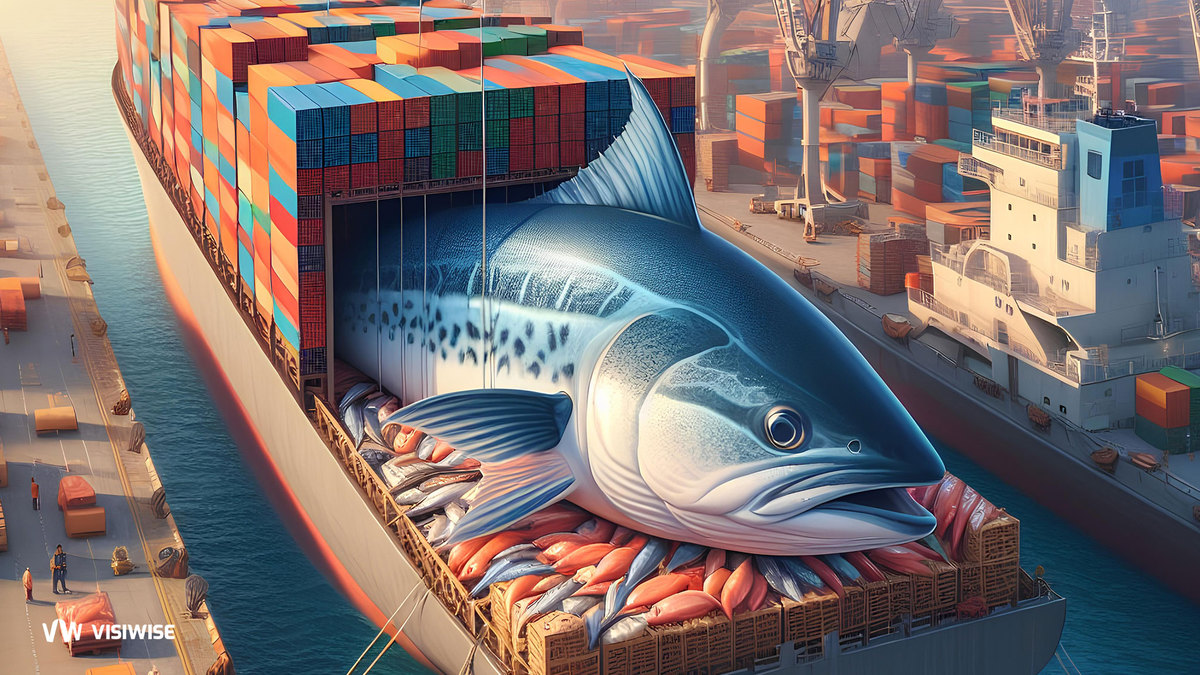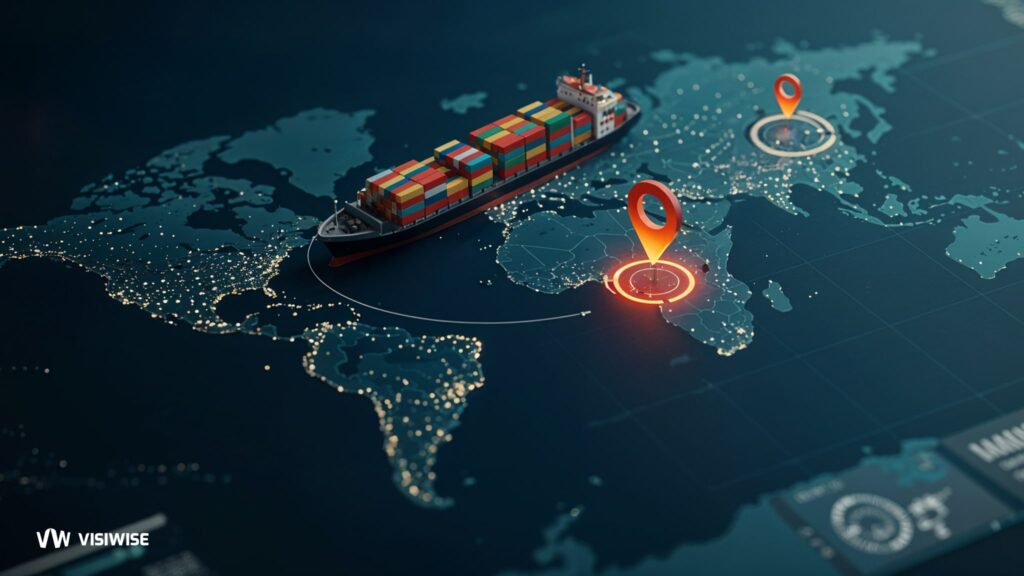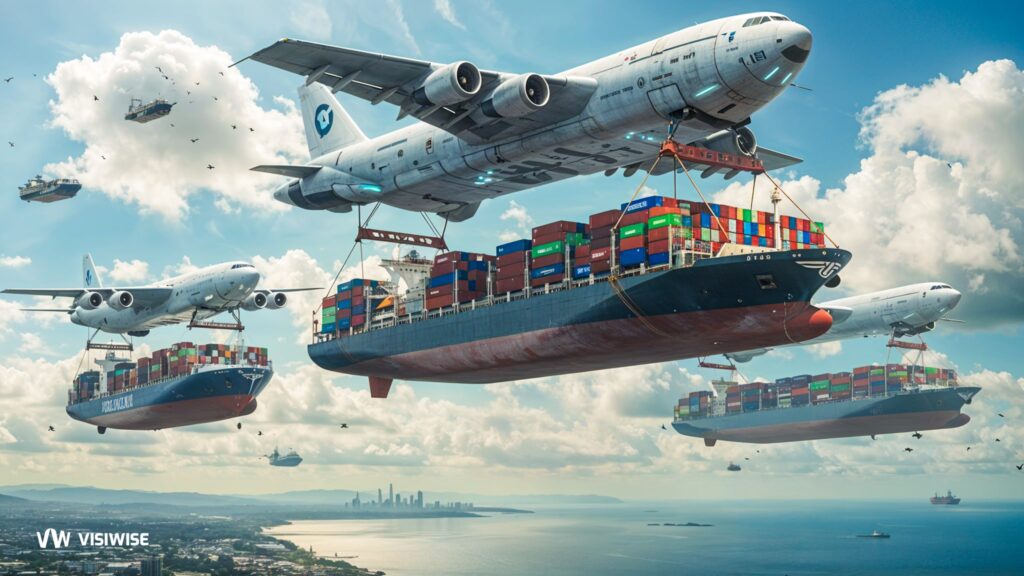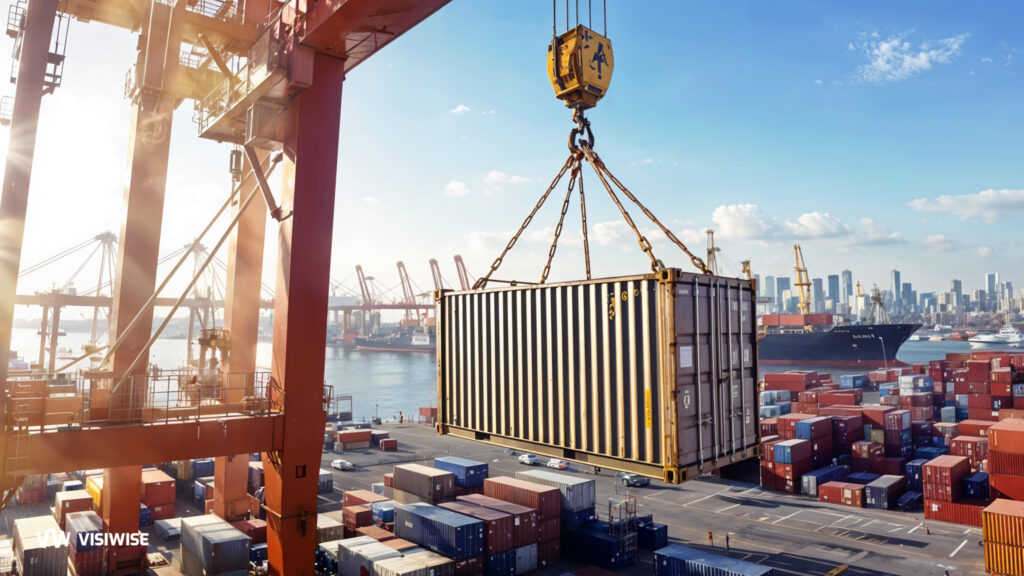Fishery and seafood products play a crucial role in global food security as a source of high-quality protein valued for its functional properties and nutritional value.
As a great healthy alternative to meat, fishery and seafood products mainly include fin and groundfish (haddock, plaice, cod, tuna), crustacean shellfish (crab, lobster, shrimp), gastropods (periwinkles, sea-snails) and bivalve molluscan shellfish (oysters, cockles, clams, mussels).
Generally speaking, fishery and seafood are important parts of a healthy diet, as strong evidence shows that they improve brain, eye, and heart health. However, like any perishable item, seafood can spoil or bruise if not shipped carefully.
As such, it’s important to have a strong understanding of the requirements and the unique preparation process entailed in safely delivering these products to their destination.
In this article, we discuss the transportation of fishery and seafood products, focusing particularly on the essential aspects of the shipping process.
Key Challenges of Shipping Seafood in a Nutshell
The main challenges involved in shipping seafood are:
- Fermentation during rainy or hot seasons.
- Bacterial growth and low temperatures
- Lack of record keeping and lapses in resource management
- Deficient cold storage and unhygienic environments
- Lack of real-time traceability
- Excessive loss of moisture that can make a product freezer burn
Shipping Seafood
Getting your product to your overseas customer is an integral part of the export process. Consistent, timely delivery of your product in good condition will help ensure that your new customers become repeat buyers. Selection of a mode of transportation should be based on destination, value of the product, amount of product to be transported, buyer’s requirements, and time in transit to reach destination. Time and expense vary by air, land, or ocean. Freight rates are negotiated with the carriers based on quality of transportation service.
Labeling and Marking Requirements
It is recommended that exporters contact the foreign buyer directly to ensure that the product specification and labeling meet current regulations. In general, identify each carton with the following information displayed:
• Product name (i.e., perishable live lobster, perishable frozen flounder, canned salmon, etc.)
• Labels should read "Export only"
• Labels must bear all of the required statements in the foreign language of the destination country as well as in English
• Net weight in metric units of the fishery and seafood product not including packaging
• Name and address of the exporter
• Country of origin
• Expiration date ("Best before" date)
• List of ingredients in decreasing concentration, including quantity or percent
• List of all additives in decreasing concentration
• Instruction for storage, including refrigeration, if special conditions are required for the product to satisfy its minimum duration period or last until the expiration date
• Instructions for storage and use
Packaging Requirements for Air Cargos
Proper packaging is necessary to maintain both the quality of fishery and seafood products and customers’ satisfaction. In general, packaging requirements for fishery and seafood vary according to the type of product, type of market, and mode of transportation. The package must be able to protect the product from rough handling during loading and unloading, compression from the overhead weight of other containers, impact and vibration during transportation, and high humidity during precooling, transit, and storage. Factors to be considered are the method of packing, temperature, humidity, desired atmosphere around the product, packaging strength, cost, availability, buyer specifications, labeling, freight rates, and government regulations.
The following guidelines, developed by the Air Transport Association of America (lATA), apply to fishery and seafood products shipped by air cargo.
Fresh Products:
Inner package: completely enclose product in strong, secure sealed polyethylene bags. Pack the bags securely and pad them so there is no room to shift.
Outer package: packages should be able to withstand shock and be able to be stacked at least 5 units high.
Boxes: corrugated paperboard (wax-saturated or otherwise water-resistant) or solid fiberboard is acceptable. Molded polystyrene containers required outer boxes. Corrugated boxes must have absorbent material on the bottom and gusseted (wet-lok type) corners.
Branding: bands must not cut containers. Minimum: two bands around the width of each box. Recommended: additional two bands around the length of each box.
Weights and containers: the weight limitation is 150 pounds per individual
box. Airlines will accept shipper-loaded containers if packed to the airline packaging and coolant specifications. Most airlines will not accept seafood products loaded in containers unless the product is pre-packaged in a wet-lok type box.
Coolants: gel-Paks are the preferred coolant but dry ice will be accepted. Wet ice will not be accepted as a coolant for seafood shipments.
Fillets: delicate fillets, pre-cooled to 32° F before packaging, require quick, efficient handling.
Whole or dressed : pre-cool fish to 32° F, pre-chill containers and do not overfill packages.
Essential Guidelines for Sea Freight Cargo Handling
Following are the recommended steps for packing fishery and seafood products for sea freight shipping:
Firstly, place your frozen seafood in protective plastic bags that are at least 4mm thick and puncture-resistant.
Secondly, employ zip-ties to secure the bag to prevent any leakage and spillage.
Thirdly, twist, fold, and remove excess air, then tie the bag tightly.
Repeat the previous step and add frozen gel packs to the next plastic bag at the bottom. Then subsequently place the seafood package on an absorbent mat inside the box and bag, twist, fold, and tie again.
Subsequently, prepare an insulated container and make space for dry ice. Afterwards, keep seafood packages in the container with dry ice, and fill the space with loose-fill packing peanuts or mic-pack polyform.
Close the insulated container lid. However, not fully closed because of dry ice.
Finally, place the insulated container box into an outer corrugated box and pack the box with the H-taping method, then apply it to all flaps and seams.
Fishery and Seafood Products Shipping Process
Seafood shipping follows a series of steps:
Step 1: Ask the shipper or carrier for a quote before commencing the shipping of fresh seafood.
Step 2: Hire a competent and reputable freight forwarder to manage the complete freight process.
Step 3: Issue a purchase order so the freight forwarders can arrange the transportation of goods.
Step 4: Get a letter of credit from your bank so that the supplier can issue the order confirmation and commercial invoice for custom clearance purchases.
Step 5: Ensure your shipper prepares the following documents in accordance with the regulatory statutes of the territory:
- Shipper’s letter of instruction
- Certificate of Origin
- Dangerous goods
- Export declaration
- A permit to export/import prohibited goods
Step 6: To avert any possible disappointment, book freight early so that goods are easily processed through customs clearance and export declaration.
Step 8: After passing the custom process, your goods should be delivered to the buyer or consignee.
Tips for Safely Shipping Seafood Products via Sea freight
1. Pay attention to temperature and heat.
Generally, the storage life span of frozen seafood depends on the temperature of the environment it is stored in. For instance, when fish is frozen within a short duration after being caught and stored at -20 degrees, it can remain in top condition for up to 8 months.
However, when stored at 15 degrees, it only remains in good condition for only one month. As such, small temperature nuances are important to consider to keep seafood properly frozen and stored while in transit.
2. Package them well
- Ensure to carefully consider key elements when choosing the packaging like:
- Selecting durable, watertight packaging, with insulation.
- Preventing any leakage and ensuring that you eliminate as much air out of the package as possible, regardless of the container type you use.
- For live shellfish such as crab, employ containers like insulated totes or wetlock cartons, marked with “This Side Up” labels.
- Seal and secure containers with strapping tape, or a similar material.
3. Choose the right design of packing containers
Typically, container packaging is used to transport fresh or frozen seafood. These sturdy containers can come in different shapes. For example, a two-piece wax box, foam box, fold-up box, or even a plastic cooler.
To decide which packaging box is most suitable, consider factors like:
- Whether it will be shipped as frozen or fresh?
- Whether the seafood will be cut to size or left as a whole?
Overall, containers should be designed to keep seafood delivered at a temperature that is no higher than zero degrees, though preferably below 5 degrees.
Furthermore, it’s recommended to include about five inches of suitable insulation. However, the insulation must be light, with low thermal conductivity and resistant to moisture penetration—for example, aluminum.
4. Use refrigerants when needed
When transporting frozen seafood, refrigerants aren’t really needed as the frozen nature and ice keep them safe for the entire trip. However, when shipping fresh seafood, you will undoubtedly require a refrigerant like gel ice, wet ice, or dry ice.
5. Give proper labeling and marking
Packages should always be labeled with indelible inks and waterproof labels whilst also remaining properly sealed. Sometimes, a ‘Fish/Wildlife’ sticker may also be employed by the shipper to provide the required information. Typically, the following items are usually displayed on each shipment:
- Name and address of shipper/consignee
- 24-hour phone number of the consignee
- Specifies species name: such as king salmon
- Sticker for the commodity to be noted as Fish or Wildlife
- Number of each species, or the weight of each type of species·
- Each container must be clearly marked Live, Fresh or Frozen
6. Understand the international regulations for shipping seafood and perishables
When considering shipping seafood, it is crucial to get acquainted with different regulations governing perishables transportation. Different written handbooks like the Perishable Cargo Regulations (PCR) manual exist (depending on your territory) that you can reference for guidance on shipping perishable items like fresh seafood.
For example, some regulations dictate that a shipment is perishable if its contents deteriorate over a specific period of time when exposed to harsh conditions, like humidity or extreme temperatures.
7. Use proper shipping routes
On average, it takes a carrier about 10–24 hours to reach their destination. As such, ensure to employ the right materials to package your seafood, with sufficient protection and refrigeration to maintain a frozen environment during the transportation time.
8. Get proper documentation
Always ensure you have the appropriate documentation to ship seafood. For example:
Shipper’s Export Declaration
- Shipper’s Export Declaration
- Shipper’s Certificate for live animals
- Airway bill
- Certificate of origin
- Commercial Invoice
- Healthy Inspection Certificate
- CITES Certificate
- Insurance Certificate
9. Get your shipments insured
Your carrier should allow you to purchase additional shipping insurance atop your shipping cost. This additional insurance comes in handy as specific types of seafood are high-value items and expensive to replace. And thus, they are worth protecting with shipping insurance during transit.
The Importance of Partnering with a Reputed Offshore Reefer Container Agency
Since seafood is very sensitive, you should understand which type of refrigerated containers are best for your seafood shipment needs. Fundamentally, the best offshore reefer container agencies should offer some of these services:
- DNV and ISO-certified offshore reefer container purchase and rental options.
- Expertise in shipping seafood and other temperature-sensitive products to offshore locations.
- Tie-ups with an overnight shipping service so that seafood can be delivered the next day to save clients time.
- Round-the-clock reefer container maintenance and technical support.
- Automated temperature and ventilation monitoring as offered by DNV offshore reefer containers.
- Real-time container tracking during transit.
- Customized offshore reefer container that can cater to your various shipping requirements.
Choosing a good offshore refrigerated container for transporting seafood could be one of the most important factors in assuring the quality of the products when they reach their location.
International Freight Forwarders
Using freight forwarders to handle fishery and seafood shipping is highly recommended. Freight forwarders act as an exporter’s agent when shipping goods overseas. They may advise the exporter regarding freight costs, port charges, consular fees, documentation fees, insurance, and handling costs. In addition to assuring that the goods arrive overseas in good condition, they review the letter of credit and other necessary financial documentation and may prepare the ocean bill of lading. Some airlines will not work directly with exporters and prefer to work with a freight forwarder. After shipment, in the case of a letter of credit, the freight forwarder will send all documents to the paying bank to confirm the export of the commodity.
Freight forwarders are licensed by the Federal Maritime Commission (FMC) to handle ocean and air freight. They have an option to be registered with the International Air Transportation Association (lATA). In order to be licensed, the freight forwarder must meet a set of requirements, so it is recommended that exporters choose a freight forwarder that is registered with lATA.
Ocean Carriers
Ocean transportation takes longer than air, but the cost is usually lower. Ocean transportation typically involves longer transit times compared to air freight, yet it is generally more cost-effective. This method is favored internationally for its ability to accommodate large volumes of goods, making it ideal for businesses engaged in global trade. Despite the extended duration, ocean shipping offers reliability and efficiency, particularly for non-perishable or bulk items. Additionally, it serves as a sustainable option, contributing to reduced carbon emissions per unit transported. As a result, many companies opt for ocean freight to meet their international shipping needs, balancing economic considerations with environmental responsibility on a global scale.
Also having a contract with the carrier is essential. Industry officials believe that 80 to 90 percent of all container movements will eventually move under contract. Shippers associations, whether for import or export, are being formed to pool container volumes and enhance shipper bargaining power when negotiating with carriers. Standard refrigerated containers are typically 40 feet. A 40 foot container can hold approximately 40,000 pounds. If you are shipping less than a containerload (LCL), try to identify a shipment consolidator who puts together a number of shipments going into the same marketTop of Form.
A booking contract is mandatory to reserve space for the cargo on a specified vessel. You may not need to know this because most of the time a freight forwarder will handle these details. In any case, the contract is binding insofar as the carrier has the right to charge for reserved space that is not used or to charge for canceled reservations without adequate notice.
Air Carriers
irlines are most often used by fish and seafood exporters to ship samples, live products, fresh products, or high-value products. They are also used for relatively low volume, frozen or dry products. They can provide a fast and reliable mode of transportation than ocean carriers but in most instances air freight is much more costly than ocean freight.
One hundred and fifty (150) pounds is the common maximum acceptable gross weight per box or carton for carriage on passenger aircraft. However, many airlines have the capability to accept heavier weights per box or container and some have lower acceptable weights. In addition, airlines will accept containers that are corrugated cartons available from most box companies. Air carriers have antitrust immunity to establish "fixed" rates. A group of air carriers that have jointly agreed on a fixed rate are known as International Air Transport Association (lATA) conferences. These fixed tariffs represent the maximum amount that airlines can charge for air cargo. Airlines are free to charge lower rates than the agreed-upon maximum.
Bill of Lading
Ocean bills of lading (b/l) serve three purposes:
• They act as a contract between the owner of the goods and the carrier to deliver the goods, spelling out all legal responsibilities and liability limits for all parties to the shipment.
• They act as a receipt from the ocean carrier, confirming that they have received the goods for shipment.
• They act as title to the shipment and can be used to transfer title to the goods to a party named in the document.
The b/l is issued by the steamship line. Bills of lading can be made out in two different ways, "to order" or "direct" (straight). When the b/l is made "to order" it offers protection to the shipper by making it absolutely necessary that the consignee present the original endorsed b/l before the goods will be released from the port of destination. An original endorsed b/l is called a negotiable b/l, and acts as title to the goods. A copy of an original endorsed bill of lading is non-negotiable and cannot act as title to the goods.
Air Waybill
The air waybill, like the bill of lading, is a contract of carriage between the air carrier and the shipper. Due to the short transit times, there are no negotiable air waybills. The air waybill is issued by the airline or consolidator.



